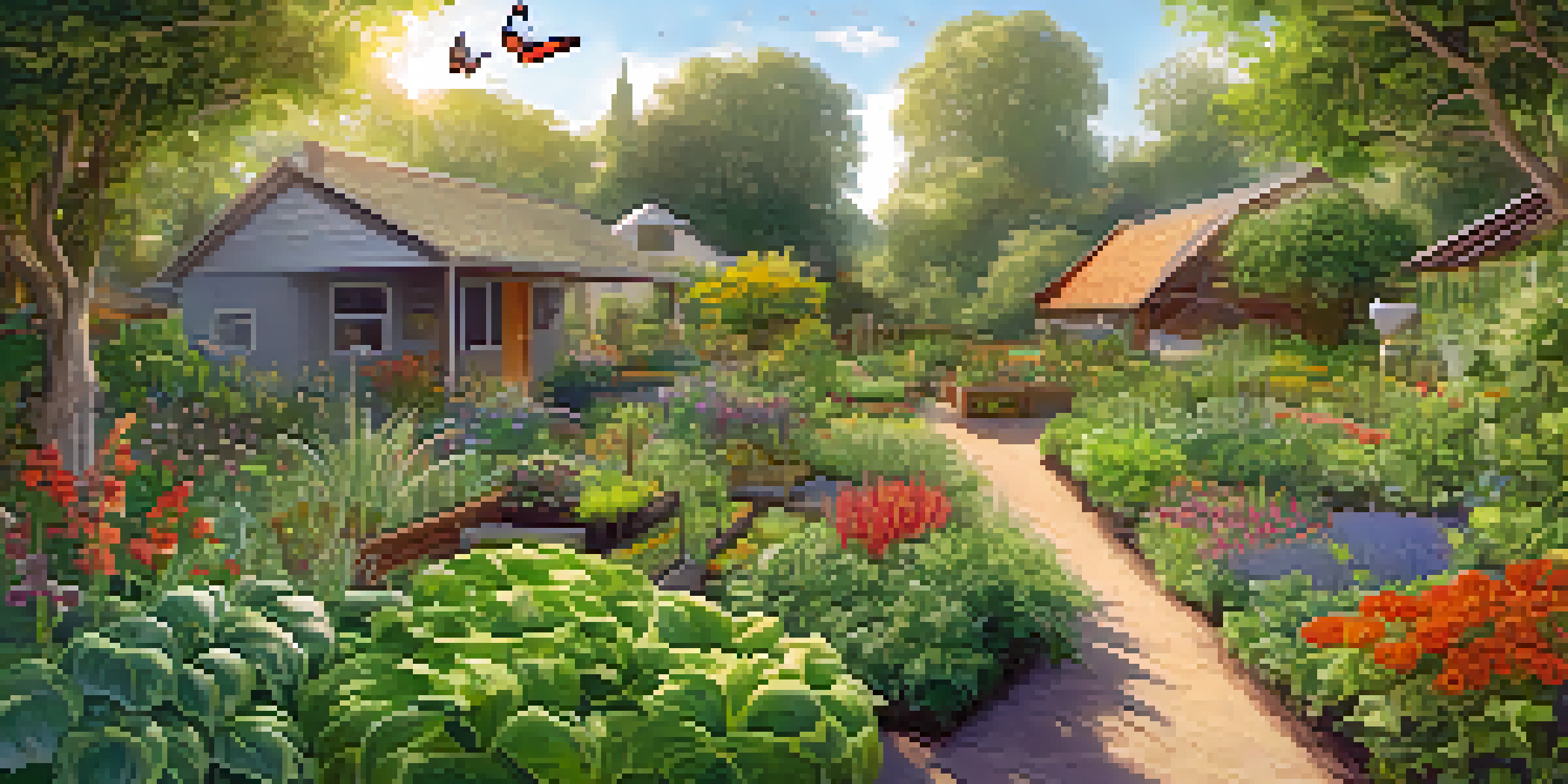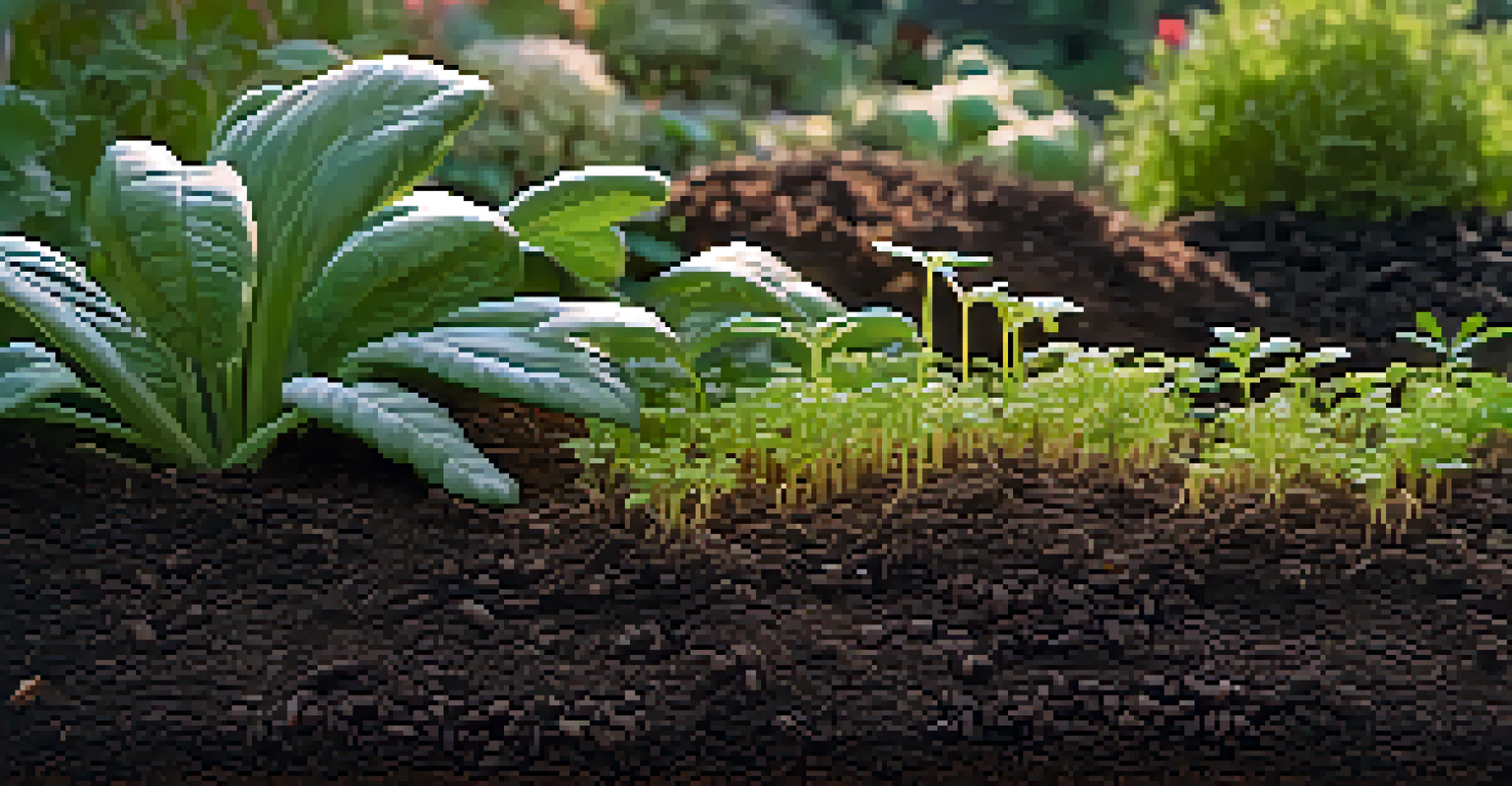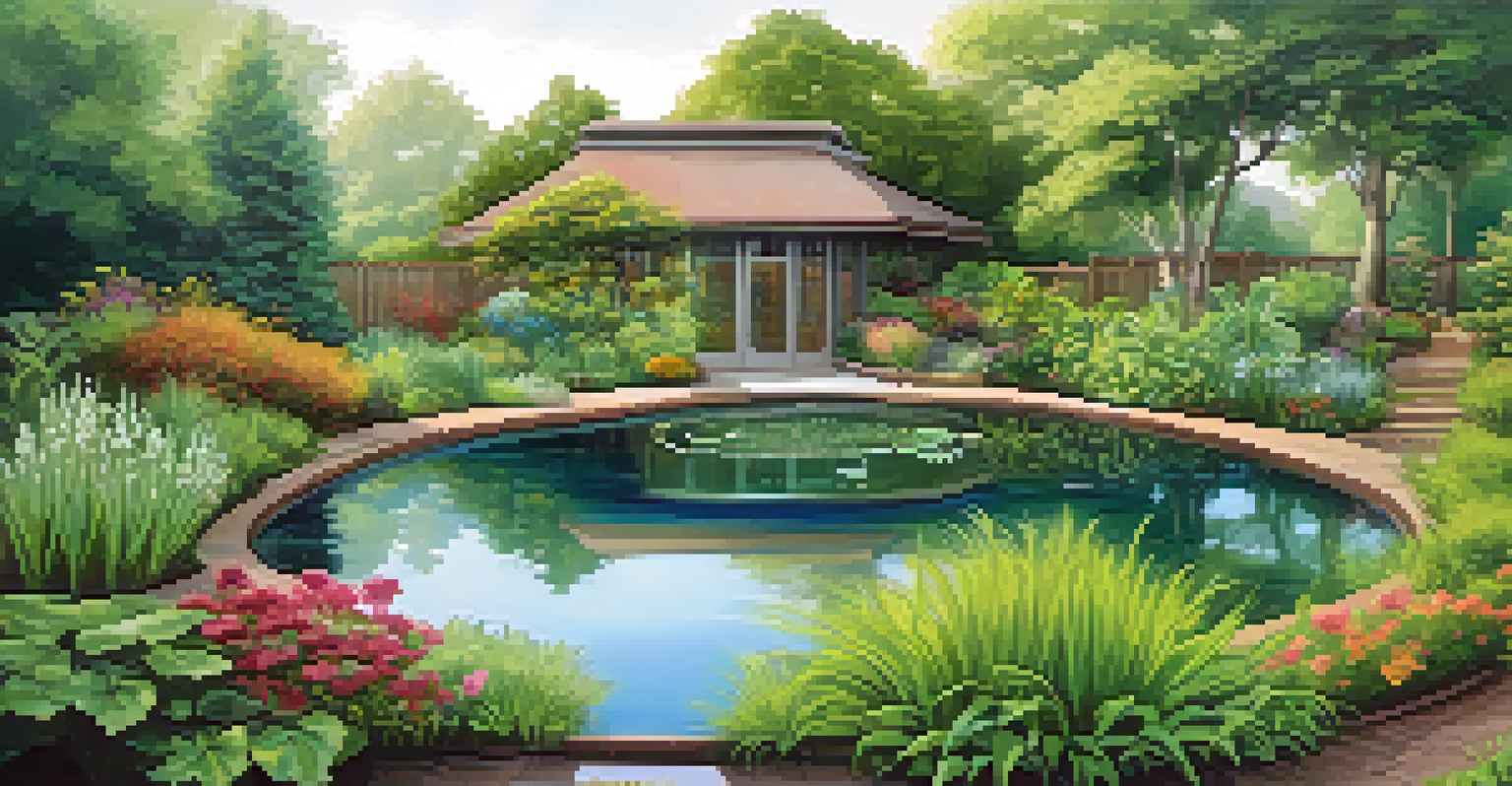Designing Your Garden: Applying Permaculture Principles

Understanding Permaculture: A Holistic Approach to Gardening
Permaculture is more than just gardening; it's a philosophy that emphasizes working with nature rather than against it. The term combines 'permanent' and 'agriculture,' focusing on sustainable, self-sufficient ecosystems. By employing permaculture principles, you can create a garden that thrives year after year with minimal input.
The ultimate goal of farming is not the growing of crops, but the cultivation and perfection of human beings.
Imagine your garden as an ecosystem, where every plant, animal, and element plays a role in a balanced environment. This interconnectedness helps to reduce waste and promotes biodiversity, which is essential for a healthy garden. A permaculture garden isn’t just beautiful; it’s a living, breathing habitat.
Understanding this holistic approach is the first step in designing your garden. By observing nature and mimicking its processes, you can create a space that not only meets your needs but also supports the surrounding ecosystem. This mindset shift is crucial for anyone looking to cultivate a sustainable garden.
Key Principles of Permaculture to Incorporate
Permaculture is built on several core principles, such as observing and interacting, catching and storing energy, and using renewable resources. These principles encourage you to take a step back and assess your space before diving in. By observing your garden's natural patterns, you can make informed decisions that enhance its productivity.

Another vital principle is the idea of 'zones' in garden design. This means placing your most frequently used plants, like herbs and vegetables, closest to your home for easy access. Meanwhile, less frequently accessed areas can be further away, creating a more efficient and functional garden layout.
Permaculture: A Holistic Philosophy
Permaculture is not just gardening; it's a sustainable philosophy that emphasizes working with nature to create self-sufficient ecosystems.
Incorporating these principles into your garden design not only maximizes productivity but also helps maintain ecological balance. By using the land wisely and respecting natural cycles, you’re setting the stage for a thriving garden that can sustain itself over time.
Designing Garden Zones for Efficiency
When designing your garden, think about how you can divide it into zones based on the frequency of use. For instance, zone one could include your kitchen garden, where you grow herbs and vegetables you use daily. This strategic placement minimizes the distance you need to travel for fresh ingredients.
The greatest threat to our planet is the belief that someone else will save it.
Zone two might be designated for perennial plants, fruit trees, or larger vegetable patches that require less frequent attention. As you move outward, zones three and four can include less intensive gardens, such as wildflowers or a natural habitat for pollinators. This layered approach maximizes productivity while minimizing effort.
By carefully planning these zones, you can create a garden that works with your lifestyle and reduces the time spent on maintenance. This thoughtful layout not only makes gardening more enjoyable but also enhances the overall health of your ecosystem.
Soil Health: The Foundation of Your Garden
Healthy soil is the backbone of any successful garden, especially in permaculture practices. It’s essential to focus on building rich, organic soil that supports plant life. Techniques like composting, mulching, and crop rotation can significantly improve soil quality over time.
Consider the role of microorganisms and worms in your soil. These tiny helpers break down organic matter, making nutrients more available to your plants. By fostering a diverse soil ecosystem, you create a self-sustaining environment that can thrive with less intervention.
Key Principles Enhance Garden Design
Incorporating core permaculture principles, such as observing natural patterns and utilizing garden zones, maximizes productivity and ecological balance.
Investing time and care into your soil will yield long-term benefits. As your soil improves, you'll notice healthier plants and increased resilience against pests and diseases. In essence, good soil health leads to a flourishing garden that requires less input from you.
Water Management: Techniques for Sustainability
Water is one of the most critical resources in gardening, and permaculture principles emphasize efficient water management. Techniques such as rainwater harvesting, swales, and ponds can help you capture and utilize water more effectively. These methods ensure that your plants receive adequate moisture without wasting precious resources.
Implementing a drip irrigation system can also be a game-changer. It delivers water directly to the roots of your plants, minimizing evaporation and runoff. This targeted approach not only conserves water but also promotes healthier plant growth.
By creating a water-wise garden, you'll not only reduce your environmental impact but also lower your gardening costs. Sustainable water management is an essential aspect of permaculture that can transform your garden into a thriving oasis.
Encouraging Biodiversity in Your Garden
Biodiversity is a key element of permaculture, promoting resilience and stability within your garden ecosystem. By planting a variety of species, you create a balanced environment that attracts beneficial insects and wildlife. This diversity can help control pests naturally, reducing the need for chemical interventions.
Consider incorporating companion planting, where certain plants enhance each other's growth when grown together. For example, planting marigolds alongside vegetables can deter pests while attracting pollinators. This symbiotic relationship fosters a healthier garden by maximizing space and resources.
Biodiversity Promotes Garden Health
Encouraging biodiversity through diverse plant species and companion planting fosters resilience and reduces reliance on chemical pest control.
Encouraging biodiversity not only benefits your plants but also creates a vibrant habitat for local wildlife. By designing a garden that welcomes various species, you're contributing to the larger ecosystem and enriching your gardening experience.
Continuous Learning and Adaptation in Permaculture
One of the most rewarding aspects of permaculture gardening is the opportunity for continuous learning. As seasons change and your garden evolves, you'll discover new challenges and successes. Embracing this journey encourages you to adapt and refine your practices for even better results.
Engage with local gardening communities or online forums for support, tips, and inspiration. Sharing experiences with fellow gardeners can help you overcome obstacles and celebrate successes together. This network can be invaluable as you navigate the intricacies of permaculture gardening.

Remember that gardening is a lifelong learning process. Each year brings new lessons, and through trial and error, you'll develop a deeper understanding of your garden's needs. By staying open to learning, you'll cultivate not just plants but also your gardening skills.